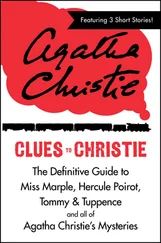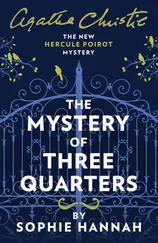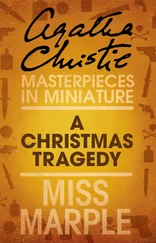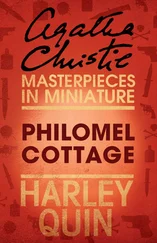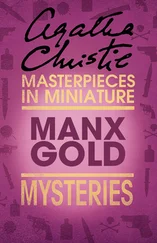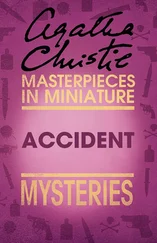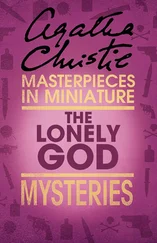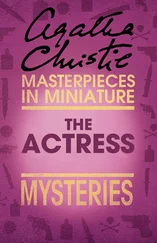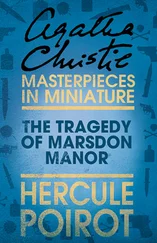Agatha Christie - Three Act Tragedy
Здесь есть возможность читать онлайн «Agatha Christie - Three Act Tragedy» весь текст электронной книги совершенно бесплатно (целиком полную версию без сокращений). В некоторых случаях можно слушать аудио, скачать через торрент в формате fb2 и присутствует краткое содержание. Жанр: Классический детектив, на английском языке. Описание произведения, (предисловие) а так же отзывы посетителей доступны на портале библиотеки ЛибКат.
- Название:Three Act Tragedy
- Автор:
- Жанр:
- Год:неизвестен
- ISBN:нет данных
- Рейтинг книги:4.5 / 5. Голосов: 2
-
Избранное:Добавить в избранное
- Отзывы:
-
Ваша оценка:
- 100
- 1
- 2
- 3
- 4
- 5
Three Act Tragedy: краткое содержание, описание и аннотация
Предлагаем к чтению аннотацию, описание, краткое содержание или предисловие (зависит от того, что написал сам автор книги «Three Act Tragedy»). Если вы не нашли необходимую информацию о книге — напишите в комментариях, мы постараемся отыскать её.
Three Act Tragedy — читать онлайн бесплатно полную книгу (весь текст) целиком
Ниже представлен текст книги, разбитый по страницам. Система сохранения места последней прочитанной страницы, позволяет с удобством читать онлайн бесплатно книгу «Three Act Tragedy», без необходимости каждый раз заново искать на чём Вы остановились. Поставьте закладку, и сможете в любой момент перейти на страницу, на которой закончили чтение.
Интервал:
Закладка:
“Well, now, miss, we didn’t expect you. Is Sir Charles coming down?”
Miss Milray replied:
“I’ve come down here unexpectedly. I shall be going back tomorrow morning. I’ve just come to fetch some things. No, I don’t want a cab, thank you. I’ll walk up by the cliff path.”
The dusk had deepened. Miss Milray walked briskly up the steep zigzag path. A good way behind came Hercule Poirot. He trod softly like a cat. Miss Milray, on arrival at Crow's Nest, produced a key from her bag and passed through the side door, leaving it ajar. She reappeared a minute or two later. She had a rusty door key and an electric torch in her hand. Poirot drew back a little behind a convenient bush.
Miss Milray passed round behind the house and up a scrambling overgrown path. Hercule Poirot followed. Up and up went Miss Milray until she came suddenly to an old stone tower such as is found often on that coast. This one was of humble and dilapidated appearance. There was, however, a curtain over the dirty window, and Miss Milray inserted her key in the big wooden door.
The key turned with a protesting creak. The door swung with a groan on its hinges. Miss Milray and her torch passed inside.
With an increase of pace Poirot caught up. He passed, in his turn, noiselessly through the door. The light of Miss Milray’s torch gleamed fitfully on glass retorts, a bunsen burner – various apparatus.
Miss Milray had picked up a crowbar. She had raised it and was holding it over the glass apparatus when a hand caught her by the arm. She gasped and turned.
The green, catlike eyes of Poirot looked into hers.
“You cannot do that, mademoiselle,” he said. “For what you seek to destroy is evidence.”
27
Hercule Poirot sat in a big armchair. The wall lights had been turned out. Only a rose-shaded lamp shed its glow on the figure in the armchair. There seemed something symbolic about it – he alone in the light – and the other three, Sir Charles, Mr. Satterthwaite and Egg Lytton Gore – Poirot’s audience – sitting in the outer darkness.
Hercule Poirot’s voice was dreamy. He seemed to be addressing himself to space rather than his listeners.
“To reconstruct the crime – that is the aim of the detective. To reconstruct a crime you must place one fact upon another just as you place one card on another in building a house of cards. And if the facts will not fit – if the card will not balance – well – you must start your house again, or else it will fall…
“As I said the other day there are three different types of mind: There is the dramatic mind – the producer’s mind, which sees the effect of reality that can be produced by mechanical appliances – there is also the mind that reacts easily to dramatic appearances – and there is the young romantic mind – and finally, my friends, there is the prosaic mind – the mind that sees not blue sea and mimosa tree, but the painted backcloth of stage scenery.
“So I come, mes amis , to the murder of Stephen Babbington in August last. On that evening Sir Charles Cartwright advanced the theory that Stephen Babbington had been murdered. I did not agree with that theory. I could not believe (a) that such a man as Stephen Babbington was likely to have been murdered, and (b) that it was possible to administer poison to a particular person under the circumstances that had obtained that evening.
“Now here I admit that Sir Charles was right and I was wrong. I was wrong because I was looking at the crime from an entirely false angle. It is only twenty-four hours ago that I suddenly perceived the proper angle of vision – and let me say that from that angle of vision the murder of Stephen Babbington is both reasonable and possible .
But I will pass from that point for the moment and take you step by step along the path I myself have trodden. The death of Stephen Babbington I may call the first act of our drama. The curtain fell on that act when we all departed from Crow’s Nest.
“What I might call the second act of the drama began in Monte Carlo when Mr. Satterthwaite showed me the newspaper account of Sir Bartholomew’s death. It was at once clear that I had been wrong and Sir Charles had been right. Both Stephen Babbington and Sir Bartholomew Strange had been murdered and the two murders formed part of one and the same crime. Later a third murder completed the series – the murder of Mrs. de Rushbridger. What we need, therefore, is a reasonable common-sense theory which will link those three deaths together – in other words those three crimes were committed by one and the same person, and were to the advantage and benefit of that particular person.
“Now I may say at once that the principal thing that worried me was the fact that the murder of Sir Bartholomew Strange came after that of Stephen Babbington. Looking at those three murders without distinction of time and place the probabilities pointed to the murder of Sir Bartholomew Strange being what one might call the central or principal crime, and the other two murders as secondary in character – that is, arising from the connection of those two people with Sir Bartholomew Strange. However, as I remarked before – one cannot have one’s crime as one would like to have it. Stephen Babbington had been murdered first and Sir Bartholomew Strange some time later. It seemed, therefore, as though the second crime must necessarily arise out of the first and that accordingly it was the first crime we must examine for the clue to the whole.
“I did indeed so fair incline to the theory of probability that I seriously considered the idea of a mistake having arisen. Was it possible that Sir Bartholomew Strange was intended as the first victim, and that Mr. Babbington was poisoned by mistake? I was forced, however, to abandon that idea. Anybody who knew Sir Bartholomew Strange with any degree of intimacy knew that he disliked the cocktail habit.
“Another suggestion: Had Stephen Babbington been poisoned in mistake for any other member of the original party? I could not find any evidence of such a thing. I was therefore forced back to the conclusion that the murder of Stephen Babbington had been definitely intended - and at once I came up against a complete stumbling block – the apparent impossibility of such a thing having happened.
“One should always start an investigation with the simplest and most obvious theories. Granting that Stephen Babbington had drunk a poisoned cocktail, who had had the opportunity of poisoning that cocktail? At first sight, it seemed to that the only two people who could have done so (e.g. who handled the drinks) were Sir Charles Cartwright himself and the parlourmaid Temple. But though either of them could presumably have introduced the poison into the glass, neither of them had had any opportunity of directing that particular glass into Mr. Babbington’s hand. Temple might have done so by adroit handing of the tray so as to offer him the one remaining glass – (not easy, but it might have been done). Sir Charles could have done so by deliberately picking up the particular glass and handing it to him. But neither of these things had occurred. It looked as though chance and chance alone directed that particular glass to Stephen Babbington.
“Sir Charles Cartwright and Temple had the handling of the cocktails. Were either of those two at Melfort Abbey? They were not. Who had the best chance of tampering with Sir Bartholomew’s port glass? The absconding butler, Ellis, and his helper, the parlourmaid. But here, however, the possibility that one of the guests had done so could not be laid aside. It was risky, but it was possible, for any of the house party to have slipped into the dining room and put the nicotine into the port glass.
Читать дальшеИнтервал:
Закладка:
Похожие книги на «Three Act Tragedy»
Представляем Вашему вниманию похожие книги на «Three Act Tragedy» списком для выбора. Мы отобрали схожую по названию и смыслу литературу в надежде предоставить читателям больше вариантов отыскать новые, интересные, ещё непрочитанные произведения.
Обсуждение, отзывы о книге «Three Act Tragedy» и просто собственные мнения читателей. Оставьте ваши комментарии, напишите, что Вы думаете о произведении, его смысле или главных героях. Укажите что конкретно понравилось, а что нет, и почему Вы так считаете.

